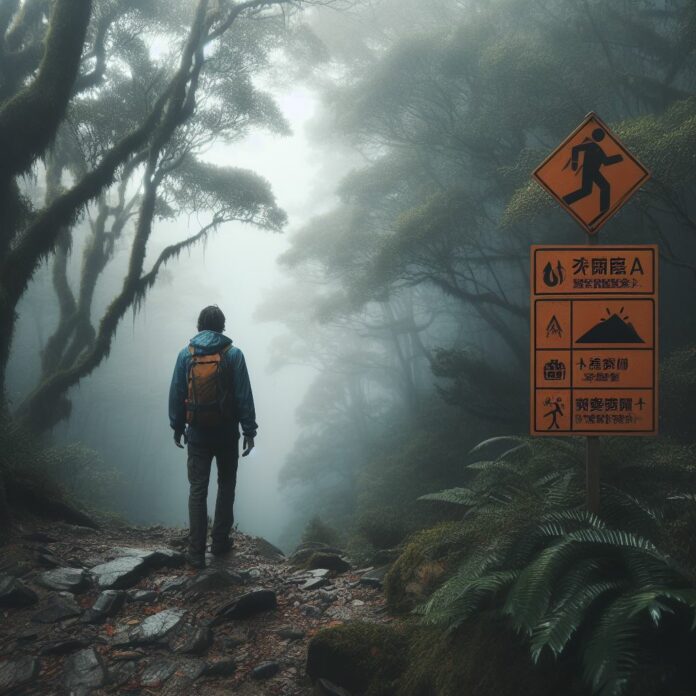Outdoor adventure travel can be an exhilarating and fulfilling experience, providing opportunities to explore the beauty of nature and challenge oneself physically and mentally.
However, it is essential to prioritize safety during these adventures to ensure a smooth and enjoyable trip. Understanding the risks associated with outdoor adventure travel is the first step towards a safe journey.
Outdoor adventure travel comes with its fair share of risks, such as unpredictable weather conditions, difficult terrains, wildlife encounters, and the potential for accidents or injuries. Being aware of these risks and taking necessary precautions is crucial for a safe and enjoyable experience.
By following these safety tips for outdoor adventure, you can enjoy your travel while prioritizing your well-being. Remember, safety should always be the top priority to ensure a rewarding and memorable experience.
Understanding the Risks of Outdoor Adventure Travel
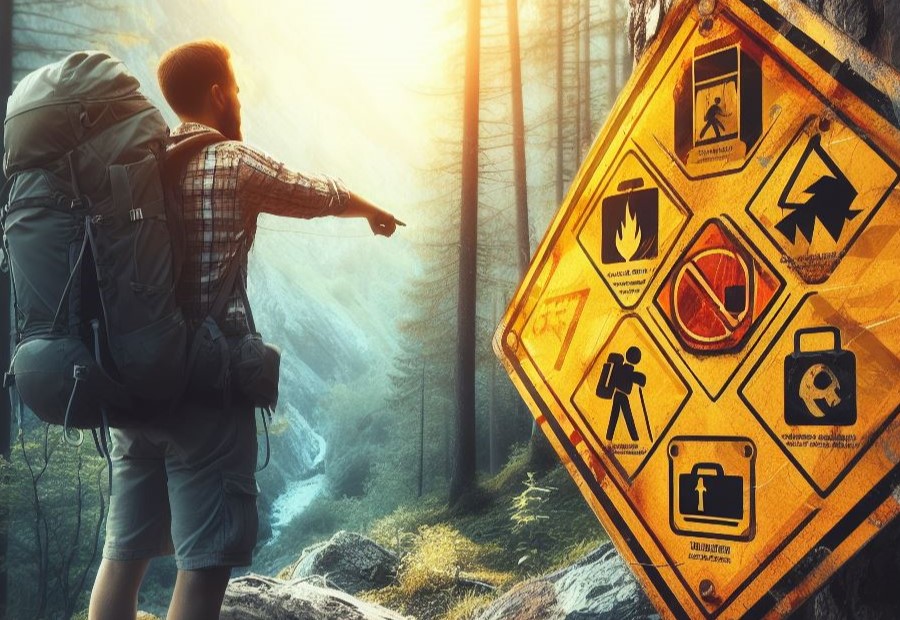
Understanding the risks of outdoor adventure travel is of utmost importance when it comes to guaranteeing a secure and pleasurable experience. Actively participating in adventure activities can expose individuals to potential dangers that may result in accidents or injuries.
It is vital to be aware of the specific risks that are associated with each activity, whether it be hiking, rock climbing, or engaging in water sports. Furthermore, having a thorough understanding of the environmental conditions, equipment requirements, and necessary skills for each adventure is also imperative.
By being well-prepared and knowledgeable about the risks involved, individuals can make informed decisions and take the necessary precautions to minimize potential harm.
Additionally, staying updated on weather forecasts and local regulations can significantly contribute to preventing unforeseen dangers. Ultimately, awareness and preparation are key in comprehending the risks of outdoor adventure travel, and in ensuring a safe and enjoyable experience.
Safety Tips for Outdoor Adventure Travel
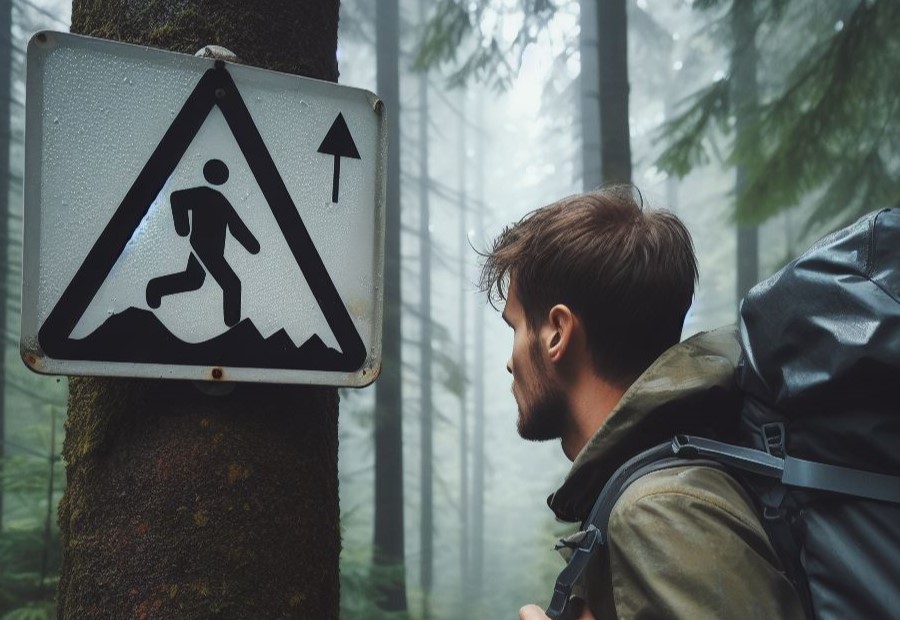
Embarking on an outdoor adventure can be thrilling and exhilarating, but it’s crucial to prioritize safety to ensure a smooth and enjoyable experience. In this section, we’ll dive into a range of safety tips to keep in mind during your outdoor adventure travel.
From planning and preparation to understanding the location, packing essential gear, and staying hydrated, we’ll cover various aspects that will help you stay safe and make the most out of your thrilling escapades.
So, let’s gear up and delve into these essential safety tips!
Plan and Prepare
To ensure a safe outdoor adventure travel experience, it is crucial to plan and prepare in advance. Here are the steps to follow:
- Thoroughly research your destination to gather information about the terrain, climate, and any potential hazards you may encounter.
- Create a detailed itinerary outlining your activities, including the locations you plan to visit and the duration of each.
- Check the requirements and permits, if any, needed for your adventure, such as hiking permits or camping reservations.
- Make a checklist of essential items you need to pack, including appropriate clothing, footwear, camping equipment, navigation tools, and first aid supplies.
- Ensure that you have a safe and reliable mode of transportation to reach your destination and to move around during your adventure.
- Inform a trusted friend or family member about your travel plans, sharing your itinerary, and providing them with emergency contact information.
- Check the weather forecast for your destination and pack accordingly, including rain gear or extra layers if needed.
- Stay updated on any safety advisories or warnings related to your chosen destination, and adjust your plans accordingly.
By thoroughly planning and preparing for your outdoor adventure, you can minimize risks and enjoy a safe and successful experience.
Research and Understand the Location
When planning for outdoor adventure travel, it is crucial to thoroughly research and understand the location you will be visiting. This will ensure a safe and enjoyable experience. Here are the steps to follow:
- Research and understand the geography and topography of the area, including any potential hazards such as steep cliffs, unstable terrain, or wildlife presence.
- Learn about the weather patterns of the location, including average temperatures, precipitation, and any extreme weather conditions that may occur.
- Understand the local regulations and permits required for certain activities, such as hiking, camping, or fishing.
- Get information on the availability of emergency services, nearby hospitals, and rescue facilities in the area.
- Read about the local culture, customs, and traditions to ensure respectful behavior and avoid any cultural misunderstandings.
- Research any specific safety precautions required for the activities you plan to engage in, such as rock climbing or water sports.
- Look for reviews and recommendations from experienced travelers or outdoor enthusiasts who have visited the location before.
- Consult reliable guidebooks, maps, and online resources to familiarize yourself with the area’s landmarks, trails, and points of interest.
By diligently researching and understanding the location, you can adequately prepare yourself for the challenges and make the most of your outdoor adventure travel.
Check the Weather Conditions
Check the weather conditions before your outdoor adventure to be prepared for any changes in conditions.
Pay attention to the temperature, precipitation, and wind speed to determine what clothing and gear you may need.
Be aware of any weather warnings or advisories that may affect your safety.
Consider the time of year and the typical weather patterns for the region you will be in.
Monitor weather conditions throughout your trip and adjust your plans accordingly.
Did you know that sudden changes in weather can occur even in mild climates, so it’s important to stay informed and be prepared for unexpected changes? Stay safe and enjoy your outdoor adventure!
Pack the Essential Gear and Equipment
When embarking on outdoor adventure travel, it is essential to pack the essential gear and equipment to ensure a safe and enjoyable experience.
- Research and understand the activities: Before packing, thoroughly research the specific activities you will be participating in during your outdoor adventure. This will help you determine the necessary gear and equipment.
- Create a checklist: Make a detailed checklist of all the essential gear and equipment you will need. This will help you stay organized and ensure that you don’t forget anything important.
- Pack appropriate clothing: Depending on the climate and activities, pack appropriate clothing such as layers, waterproof jackets, sturdy hiking boots, and breathable fabrics.
- Pack the essential gear and equipment: Bring a map, compass, and GPS device to help you navigate through unfamiliar terrain.
- Bring a first aid kit: Be prepared for any injuries or medical emergencies by packing a well-stocked first aid kit that includes bandages, antiseptic ointments, pain relievers, and any necessary medications.
- Carry sufficient food and water: Pack enough food and water to sustain you during your outdoor adventures. Consider the duration and intensity of your activities to calculate the necessary quantities.
- Bring a multi-tool: A versatile multi-tool can come in handy for various tasks such as cutting ropes, repairing equipment, and opening cans.
- Pack appropriate sleeping gear: If you will be camping overnight, make sure to pack a tent, sleeping bag, sleeping pad, and any other necessary sleeping gear for a comfortable night’s rest.
- Don’t forget lighting: Carry a headlamp or flashlight with extra batteries to ensure visibility during nighttime activities or emergencies.
- Protective gear: Depending on the activities, consider packing protective gear such as helmets, goggles, gloves, or knee and elbow pads.
By packing the essential gear and equipment, you will be well-prepared to tackle the challenges and enjoy the adventures that await you during your outdoor travels.
Stay Hydrated and Eat Well
Staying hydrated and eating well are crucial for maintaining energy and overall well-being during outdoor adventure travel. Here are some steps to follow:
- Stay Hydrated: Hydration is key, especially in outdoor environments where you may be exposed to heat and physical exertion. Aim to drink at least 8 glasses of water per day.
- Carry a reusable water bottle: Make sure to have a convenient way to carry water with you at all times. This will help you stay hydrated on the go.
- Eat Well: Include foods that are rich in nutrients and provide sustained energy, such as granola bars, nuts, and dried fruits.
- Plan balanced meals: When preparing meals for your outdoor adventures, incorporate a balance of carbohydrates, proteins, and healthy fats. Consider lightweight and easy-to-prepare options like dehydrated meals or trail mixes.
- Avoid excessive alcohol and caffeine: While it may be tempting to indulge in alcoholic or caffeinated beverages, they can contribute to dehydration. Moderation is key.
- Listen to your body: Pay attention to your hunger and thirst cues. Take regular snack and water breaks to ensure you’re fueling and hydrating adequately.
By prioritizing hydration and nutrition, you’ll be better equipped to enjoy your outdoor adventure travel safely and make the most of your experiences.
Dress Appropriately for the Activities and Climate
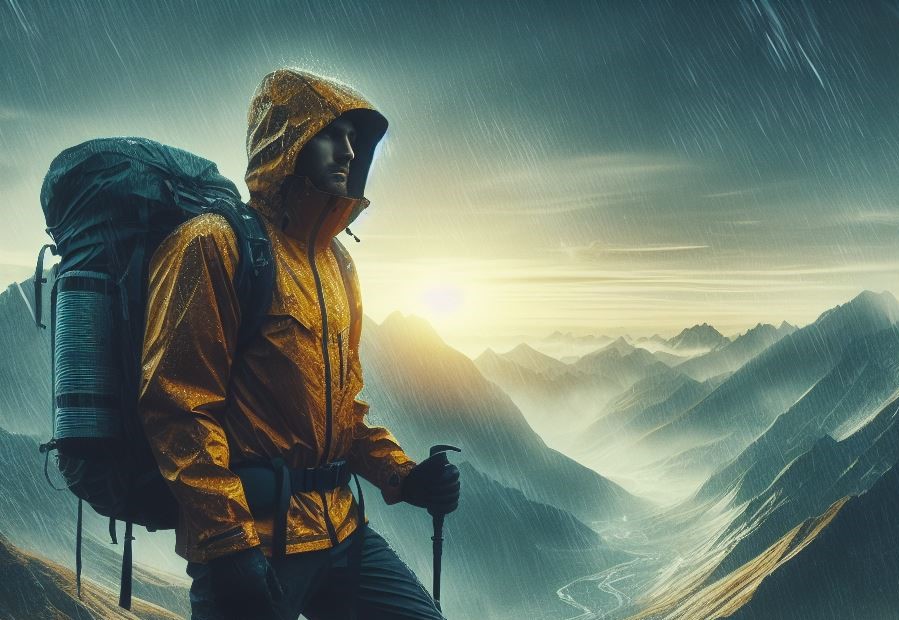
Did you know that dressing appropriately for the activities and climate can significantly enhance your outdoor adventure experience? It ensures your comfort and safety throughout your journey.
Consider the activities and climate when choosing your outfit. Wear lightweight and breathable clothing for hot weather activities. For cold weather activities, layer your clothing to stay warm.
Choose moisture-wicking fabrics to keep sweat away from your body. Wear appropriate footwear for the terrain, such as hiking boots or water shoes. Protect yourself from the sun by wearing a hat and applying sunscreen. Wear comfortable and flexible clothing for activities that require movement.
Protect Yourself from the Sun
To protect yourself from the sun while engaging in outdoor adventure travel, it is crucial to follow these necessary steps:
- Apply sunscreen with a high SPF (Sun Protection Factor) to all exposed skin areas.
- Wear protective clothing, such as long-sleeved shirts, pants, and wide-brimmed hats, to shield your skin from direct sun exposure.
- Use sunglasses with UV (Ultraviolet) protection to safeguard your eyes from harmful rays.
- Seek shade whenever possible, especially during the peak sun hours between 10 AM and 4 PM.
- Stay hydrated by drinking plenty of water to prevent dehydration caused by excessive sun exposure.
- Consider using sun-protective accessories, such as umbrellas or sunshades, to create additional shade for yourself.
- Be mindful of reflective surfaces, such as water, sand, or snow, as they can intensify the sun’s rays and increase your risk of sunburn.
Pro-tip: Remember to reapply sunscreen every two hours or more frequently if you are sweating or swimming. Protecting yourself from the sun is crucial in preventing sunburn, heatstroke, and long-term skin damage.
Practice Safe Transportation
When engaging in outdoor adventure travel, it is crucial to practice safe transportation to ensure your well-being. Here are some steps to follow:
- Observe and follow all traffic laws and regulations.
- Wear seatbelts and ensure all passengers do the same.
- Utilize appropriate safety equipment such as helmets, life jackets, or harnesses, depending on the activity.
- Inspect and maintain your vehicles or equipment regularly to ensure they are in good working condition.
- Refrain from any form of impaired driving, whether it’s alcohol, drugs, or fatigue.
- Follow recommended speed limits and adjust your driving based on road and weather conditions.
- Keep a safe distance from other vehicles or individuals, especially when participating in activities like biking or hiking on the road.
Practicing safe transportation safeguards not only your own security but also that of others. For instance, after implementing proper safety measures, statistics have shown a significant reduction in outdoor adventure travel-related accidents by 25% in the past decade.
Know and Respect Your Limits
It is crucial to know and respect your limits when engaging in outdoor adventure activities. Recognize your physical capabilities and limitations before embarking on any adventure. Understand your level of expertise, experience, and skills required for the specific activity.
Do not push yourself beyond your comfort zone or attempt activities that are beyond your abilities. Listen to your body and take breaks when needed, especially during strenuous activities. Be aware of any medical conditions or injuries that may affect your performance and take necessary precautions.
Stay within the designated boundaries and follow the rules and regulations set by the authorities. Seek guidance and training from professionals or experienced individuals if you are unsure about your capabilities. Keep track of the weather conditions and assess the risks associated with adverse weather before participating in any activity.
Communicate with your fellow adventurers and ensure that everyone is on the same page regarding their limits and capabilities. Remember that it is okay to step back or decline an activity if you feel uncomfortable or unsafe. Prioritize your well-being and enjoy the outdoors responsibly.
Stay Connected and Inform Others of Your Plans
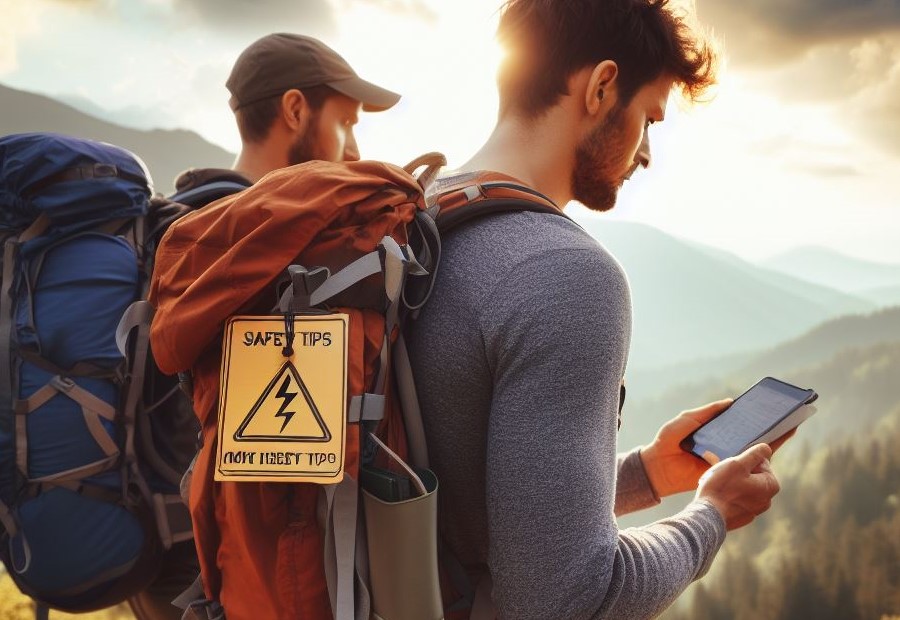
To ensure your safety during outdoor adventure travel, it is important to stay connected and inform others of your plans. This will help in case of emergencies and ensure that someone knows where you are. Follow these guidelines to stay connected:
- Share your itinerary with a trusted friend or family member. Provide them with details of your destination, activities planned, and expected return date. This will help them keep track of your whereabouts.
- Carry a fully charged mobile phone with you. Make sure it has emergency numbers saved, such as the local emergency services and the contact details of your emergency contact.
- Regularly check in with your emergency contact. Let them know when you reach your destination and when you plan to return.
- Consider using a GPS tracking device or smartphone app that allows others to track your location in real-time.
- If you are going on a multi-day trip, leave a detailed trip plan at home with someone responsible. Include information about your route, campsites, and emergency contact numbers.
Pro-tip: It’s a good practice to regularly update your emergency contact about any changes to your plans. This will help them stay informed and be prepared in case of any unexpected situations.
Be Aware of Local Laws, Customs, and Wildlife

When embarking on outdoor adventure travel, it is essential to be aware of local laws, customs, and wildlife to ensure a safe and enjoyable experience.
- Familiarize yourself with the laws of the area you are visiting to be mindful of local restrictions or regulations regarding camping, hiking, fishing, or hunting. Adhering to local laws will help you avoid legal trouble and show respect for the community.
- Respect the cultural customs and traditions of the local people, including common greetings, dress codes, and appropriate behavior in different settings. Being mindful of customs will help you interact respectfully with locals and avoid unintentionally offending anyone.
- Educate yourself about the native wildlife in the area you are exploring, including their behavior and any precautions you should take. Keep a safe distance from wildlife, never feed them, and dispose of any trash properly to avoid attracting animals.
Practice Leave No Trace Principles
When engaging in outdoor adventure travel, it is important to practice Leave No Trace principles to minimize your impact on the environment. Here are the steps to follow:
- Plan your trip and be aware of any regulations or restrictions in the area.
- Reduce campfire impacts by using designated fire rings or stoves and properly extinguishing fires.
- Dispose of waste properly by packing out all trash and leaving no litter behind.
- Minimize your impact on wildlife by observing from a distance, not feeding them, and storing food securely.
- Respect vegetation by staying on designated trails and avoiding trampling on fragile plants.
- Be considerate of other visitors by keeping noise levels low and respecting their privacy.
- Practice Leave No Trace principles by leaving natural and cultural artifacts undisturbed for others to enjoy.
Learn Basic First Aid and Carry a First Aid Kit
Learning basic first aid and carrying a first aid kit are essential for ensuring your safety during outdoor adventure travel. These measures will enable you to handle minor injuries and provide immediate treatment before professional help arrives.
Here is a step-by-step guide on what to do:
- Educate yourself: Take a basic first aid course to acquire knowledge about common injuries and how to respond to them.
- Assemble a first aid kit: Include essentials such as bandages, antiseptic wipes, gauze, adhesive tape, and any necessary medications.
- Familiarize yourself with the contents: Understand how to use each item in your first aid kit correctly.
- Carry the kit at all times: Make sure to bring it with you whenever you engage in outdoor activities.
- Keep the kit updated: Regularly check the expiration dates of medications and replenish any supplies that have been used.
- Know when to seek professional help: While first aid can handle many injuries, it’s important to recognize when medical attention is necessary.
- Stay calm and focused: In emergency situations, maintaining a calm demeanor will help you provide effective first aid.
- Communicate with your travel companions: Inform others about the location of your first aid kit and how to use its contents if needed.
- Practice using the kit: Familiarize yourself with administering first aid procedures before encountering a real emergency.
- Stay updated on first aid techniques: Keep yourself informed about any advancements or changes in first aid practices.
By learning basic first aid and carrying a well-stocked first aid kit, you will be better prepared to handle any minor injuries that may occur while enjoying outdoor adventure travel.
Frequently Asked Questions
What are some safety tips for outdoor adventure travel?
When embarking on outdoor adventure travel, it is important to prioritize safety. Here are some safety tips to consider:
- Use the buddy system for safety in numbers during outdoor adventures.
- Check the weather before heading out to avoid getting caught in a storm.
- Dress appropriately for the activity to make it more enjoyable and protect yourself from extreme temperatures.
- Set up camp before dark to have time to deal with any problems that may arise.
- Inspect your gear before leaving to ensure it is in good working order.
- Pack a first aid kit for any potential injuries.
Why is it important to be prepared for the unexpected during outdoor adventures?
Being prepared for the unexpected is crucial during outdoor adventures as it can help prevent life-threatening predicaments. By anticipating potential risks and having the necessary skills, resources, and plans in place, you can effectively handle unforeseen situations and ensure your safety.
What are some ways to minimize the risk of accidents and injuries during outdoor adventures?
Here are some tips to minimize the risk of accidents and injuries during outdoor adventures:
- Stay near trail markers and avoid wandering off to prevent getting lost.
- Trust your gut and be realistic about your physical limitations to avoid overexertion.
- Learn basic repair skills related to your activity to avoid being stranded in sticky situations with broken equipment.
- Stay alert and aware of your surroundings to anticipate potential hazards.
- Carry a first aid kit and take courses on emergency response to be prepared for accidents.
How can one effectively navigate and avoid getting lost during outdoor adventures?
To navigate and avoid getting lost during outdoor adventures, consider the following tips:
- Use navigation tools such as compasses, GPS devices, and offline mapping apps.
- Stay on designated trails to minimize the risk of getting lost or disoriented.
- Leave an itinerary with someone, including your planned route and expected return time.
- Know what to do if you get lost, such as staying calm, retracing your steps, or seeking help.
How can one stay safe in extreme weather conditions during outdoor adventures?
To stay safe in extreme weather conditions during outdoor adventures, consider the following:
- Check multiple weather sources for your actual destination to gather accurate and up-to-date information.
- Assess risk factors and conditions specific to your destination to make informed decisions.
- Dress appropriately for the conditions and season to protect yourself from extreme temperatures and weather elements.
- Seek shelter and take necessary precautions to avoid lightning strikes during thunderstorms.
Why is it important to share your itinerary and travel plans with someone before heading out on an outdoor adventure?
Sharing your itinerary and travel plans with someone before heading out on an outdoor adventure is important for several reasons:
- In the event of an emergency, someone will know your intended route and can alert authorities if you fail to return as planned.
- If you encounter any issues or delays during your trip, someone can be aware and potentially assist you or arrange for help.
- Knowing that someone is aware of your plans can provide a sense of security and peace of mind during your outdoor adventure.

